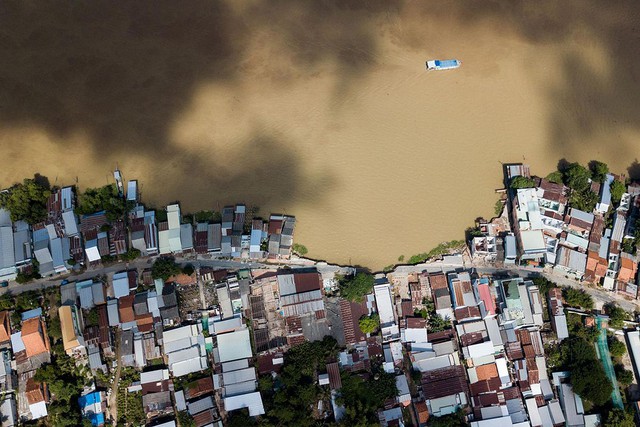Climate change impacts could leave 1 million Vietnamese in extreme poverty by 2030
VGP - Without proper adaptation and mitigation measures, it is estimated that climate change will cost Viet Nam about 12-14.5 percent of GDP a year by 2050 and could plunge up to one million people into extreme poverty by 2030, said World Bank Country Director for Viet Nam Carolyn Turk.

Illustration photo
Ms. Carolyn Turk made the remark at the launch of the Viet Nam Country Climate and Development Report (CCDR) in Ha Noi on July 14.
Bigger threats from climate change
After over two decades of stable growth, Viet Nam set an ambitious goal to become a high-income economy by 2045. However the ambition could be undermined by climate change,” Turk said.
However, Viet Nam, with over 3,200 kilometers of coastline and many low-lying cities and river delta regions, is one of the most vulnerable countries in the world to climate change.
Climate change impacts – mainly higher and more variable temperatures and sea level rise – are already disrupting economic activity and undermining growth. Initial calculations suggest that Viet Nam lost US$10 billion in 2020, or 3.2 percentof GDP, to climate change impacts.
Without proper adaptation and mitigation measures, it is estimated that climate change will cost Viet Nam about 12-14.5 percent of GDP a year by 2050 and could plunge up to one million people into extreme poverty by 2030.
Manuela V. Ferro World Bank Vice President for East Asia and Pacific suggested Viet Nam put aside large resources to protect Ho Chi Minh City, the biggest metropolis in the country and the Mekong Delta Region from negative impacts of climate change.
Viet Nam pledged to halt deforestation by 2030, cut methane emissions by 30 percent, and end all investment in new coal power generation, scale up deployment of renewable energy, and phase out coal power by the 2040s.
These commitments go beyond its 2020 Nationally Determined Contribution (NDC), which pledged it to an unconditional emissions reduction target of 9 percent by 2030 from a base year of 2014 and a conditional reduction target of 27 percent.
To help Viet Nam achieve its development goals while implementing its climate commitments, the report proposes actions on two fronts: adapting to climate impacts and pursuing a growth strategy that steers the economy away from carbon-intensive production.
These two paths will help the country achieve its climate objectives while expanding its GDP per capita by more than 5 percent a year – the average rate needed to become a high-income country by 2045.
Five priority policy packages
Based on the report’s modeling and analytical work, the World Bank Group recommends five priority policy packages.
A regional program for the vulnerable Mekong Delta, which contributes 50 percent of the country’s rice production and a third of its agricultural GDP. The region faces threats from coastal and river erosion, sea-level rise, and saltwater intrusion. The program would curtail sand mining and groundwater extraction, retrofit physical assets, and strengthen regional coordination, while supporting the livelihoods of farmers seeking to adapt to the challenges of climate change
An integrated plan to shield coastal urban areas and transport links from extreme weather. This would include upgrades to road and power assets, and improved weather-risk management and early warning systems.
A program to reduce air pollution clogging the Ha Noi area, where poor air quality has exceeded World Health Organization guidelines at least five times for extended periods between 2018 and 2021, and where particulate concentrates are predicted to increase.
Accelerating the transition to renewable energy with regulatory reforms that encourage greater private sector participation, investments in the power grid, and implementation of energy efficiency plans.
Scaled up social protections to offset economic impacts climate action may have on the most vulnerable people. Funding social programs with revenues from a carbon tax will help buffer poor people from price increases in transport and energy.
The report estimates the discounted costs of additional investments in climate adaptation and mitigation to be 6.8 percent of GDP a year or a cumulative US$368 billion through 2040 at current value.
Public investment will need to be supplemented by policy reforms to crowd in private investment. Priority investments in adaptation could cost around $254 billion to 2040, and the cost of slowing the growth in emissions will require at least $81 billion. Carbon taxes or regulations creating emissions trading systems will be key to reaching Viet Nam’s ambitious climate and development goals./.
